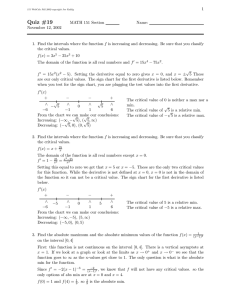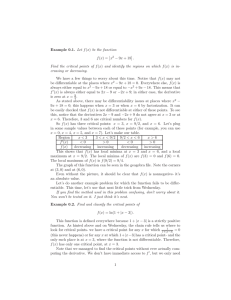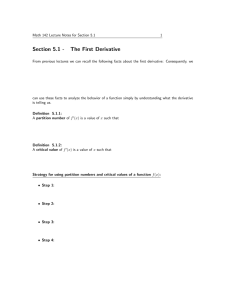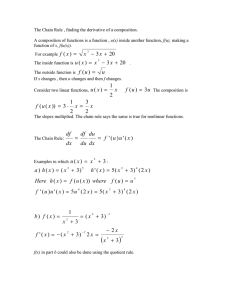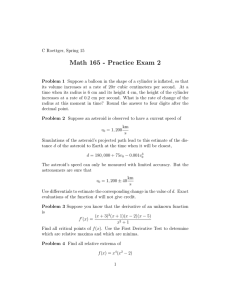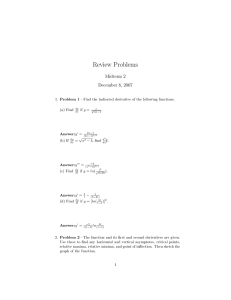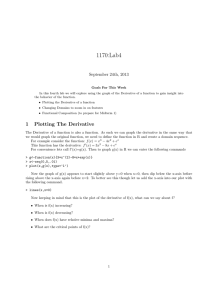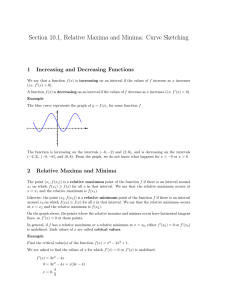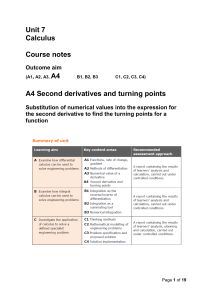I’ve sort-of implied this, but the first derivative test can... intervals on which a function is increasing and on which...
advertisement
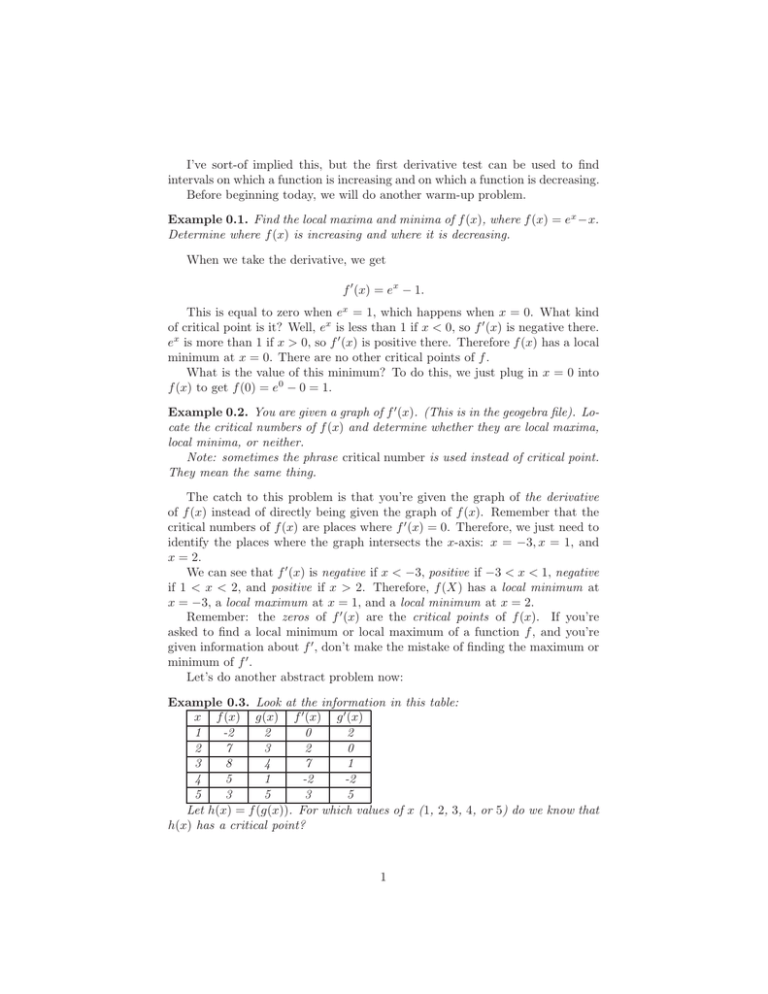
I’ve sort-of implied this, but the first derivative test can be used to find intervals on which a function is increasing and on which a function is decreasing. Before beginning today, we will do another warm-up problem. Example 0.1. Find the local maxima and minima of f (x), where f (x) = ex −x. Determine where f (x) is increasing and where it is decreasing. When we take the derivative, we get f ′ (x) = ex − 1. This is equal to zero when ex = 1, which happens when x = 0. What kind of critical point is it? Well, ex is less than 1 if x < 0, so f ′ (x) is negative there. ex is more than 1 if x > 0, so f ′ (x) is positive there. Therefore f (x) has a local minimum at x = 0. There are no other critical points of f . What is the value of this minimum? To do this, we just plug in x = 0 into f (x) to get f (0) = e0 − 0 = 1. Example 0.2. You are given a graph of f ′ (x). (This is in the geogebra file). Locate the critical numbers of f (x) and determine whether they are local maxima, local minima, or neither. Note: sometimes the phrase critical number is used instead of critical point. They mean the same thing. The catch to this problem is that you’re given the graph of the derivative of f (x) instead of directly being given the graph of f (x). Remember that the critical numbers of f (x) are places where f ′ (x) = 0. Therefore, we just need to identify the places where the graph intersects the x-axis: x = −3, x = 1, and x = 2. We can see that f ′ (x) is negative if x < −3, positive if −3 < x < 1, negative if 1 < x < 2, and positive if x > 2. Therefore, f (X) has a local minimum at x = −3, a local maximum at x = 1, and a local minimum at x = 2. Remember: the zeros of f ′ (x) are the critical points of f (x). If you’re asked to find a local minimum or local maximum of a function f , and you’re given information about f ′ , don’t make the mistake of finding the maximum or minimum of f ′ . Let’s do another abstract problem now: Example 0.3. Look at the information in this table: x f (x) g(x) f ′ (x) g ′ (x) 1 -2 2 0 2 2 7 3 2 0 3 8 4 7 1 4 5 1 -2 -2 5 3 5 3 5 Let h(x) = f (g(x)). For which values of x (1, 2, 3, 4, or 5) do we know that h(x) has a critical point? 1 To do this, we need to differentiate h(x). We get f ′ (g(x))g ′ (x). This is zero whenever g ′ (x) = 0 or when f ′ (g(x)) = 0. We know that g ′ (x) = 0 when x = 2, so there is a critical point at x = 2. Furthermore, f ′ (x) is zero when x = 1, so there is a critical point at any x value for which g(x) = 1- this happens when x = 4. So f (g(x)) has critical points at x = 2 and at x = 4. The point of this problem is that you will often have to reason indirectly about what a critical point is. Let’s do another example: Example 0.4. One of the graphs a, b, c, d in the geogebra is the graph of the derivative of the function f (x) (the black one). Which one is it? How do you know? The graph of the derivative is a, the red one. Notice that a is zero at the critical points, of f and that f is increasing when a is positive and decreasing when a is negative. 2

